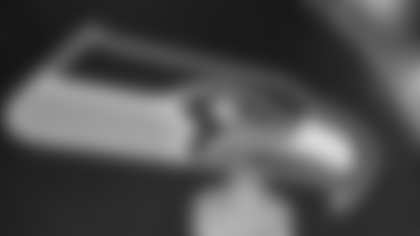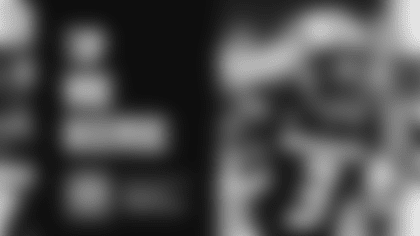The 2021 NFL draft kicks off on Thursday, April 29, though as things currently stand, the Seahawks will be sitting out Day 1 of the draft having traded their first-round pick to acquire safety Jamal Adams last summer. While the Seahawks could always add more picks via trades, for now they have just three picks due to the trades made to acquire Adams, defensive end Carlos Dunlap II and guard Gabe Jackson. And whether the Seahawks end up making just those three picks or if John Schneider works his magic and they end up selecting more players, there will still be opportunities to add talent to the roster, so over the next two weeks, Seahawks.com will take a position-by-position look at where things currently stand for the Seahawks, as well as the top draft prospects at each position. We'll also look at Seattle's draft history at each position over the past 11 drafts under general manager John Schneider and head coach Pete Carroll.
On Monday we kicked things off with the offensive line, and today we turn our attention to the other side of the ball with the defensive line. Tomorrow, we'll look at where things stand at running back.
Seattle's 2021 Draft Picks: Round 2, No. 56 overall; Round 4, No. 129 overall; Round 7, Pick No. 250 overall.
Draft History Under Carroll & Schneider: DE E.J. Wilson (No. 127 overall, 2010); DE Dexter Davis (No. 236, 2010); DE Pep Levingston (No. 205, 2011); DE Bruce Irvin (No. 15, 2012; Irvin later switched to LB); DE Jaye Howard (No. 114, 2012); DE Greg Scruggs (No. 232, 2012); DT Jordan Hill (No. 87, 2013); DT Jesse Williams (No. 137, 2013); DE Cassius Marsh (No. 108, 2014); DT Jimmy Staten (No. 172, 2014); DE Frank Clark (No. 63, 2015); DE Obum Gwacham (No. 209, 2015); DT Jarran Reed (No. 49, 2016); DT Quinton Jefferson (No. 147, 2016); DT Malik McDowell (No. 35, 2017); DT Nazair Jones (No. 102, 2017); DE Rasheem Green (No. 79, 2018); DE/LB Jacob Martin (No. 186, 2018); DE L.J. Collier (No. 29, 2019); DT DeMarcus Christmas (No. 209, 2019); DE Darrell Taylor (No. 48, 2020); DE Alton Robinson (No. 148, 2020).
Where The Seahawks Stand
At the end of the season, Carroll talked about wanting to "make sure this pass rush comes back intact," and the Seahawks have done that in free agency, and then some. After having one of the league's most productive pass rushes in the second half of the 2020 season, the Seahawks have set out to make that group even better, by not only re-signing Carlos Dunlap II and Benson Mayowa, but also by adding Kerry Hyder Jr., a defensive end who a year ago led the 49ers in sacks with 8.5. With the expected continued growth of young players like L.J. Collier, who took a big step forward in his second season, and Alton Robinson, who was very disruptive in limited snaps as a rookie, as well as the addition to the group of second-round pick Darrell Taylor, who missed his rookie season with a leg injury, the Seahawks potentially could have their best and defensive end rotation in several years.
But while the defensive end depth looks to be a strength of the team, the Seahawks, for now at least, aren't as deep at defensive tackle having released starter Jarran Reed in a salary cap-related move. Poona Ford is back after a very strong 2020 season, having signed a multi-year extension this offseason, as is Bryan Mone, and the Seahawks brough back veteran Al Woods as well, but beyond those three the Seahawks' only defensive tackles are a pair of 2020 undrafted free agents, Cedrick Lattimore and Myles Adams.
Several of Seattle's ends have the ability to move inside in passing situations, including Collier, Hyder and Rasheem Green, so the interior line depth isn't as thin as it might look on the roster, but that still could be a position the Seahawks want to bolster in free agency, or perhaps after the draft having had success finding UDFA success stories like Ford and Mone. And while defensive end might not look to be a need on paper, Carroll and Schneider always like to say that a team can't have too many pass rushers, so if the right player were available, defensive end is always a possibility for Seattle in the draft.
NFL.com's Top 5 Edge Rushers
1. Jayson Oweh, Penn State
Overview (via NFL.com): Prototypical NFL build and some of the most exciting traits and explosiveness of any edge defender in this draft. Those features can't be taught but they can be coached up, so any concerns about his lack of polish at this stage should be tempered. He has dominant potential as a run defender with burst and range to upend back-side and play-side runs, turning them into short gains or losses. While he figures to stack up stats with sheer athleticism, he does lack eye discipline and feel for blocking schemes, which tends to derail his momentum at times. He's slow getting off the snap, which dulls the early advantage he should be able to generate with his wicked get-off as a rusher. At this point, the hand usage and overall rush plan are lacking, but he has the feet for inside counters, the power to pull rush and the bend to dip and run the rush arc with fury. It's not all there yet, but with more coaching and experience, Oweh has the ability to rate as a Pro Bowl rush linebacker with the ability to stick a hand in the ground if you need it.
2. Azeez Ojulari, Georgia
Overview (via NFL.com): Fully grown 3-4 outside linebacker with NFL-ready strength and impressive explosiveness. Ojulari is better in pursuit than he is as an edge setter, but he is quick to slide off a block and either make a tackle or accelerate to pursue in space. His ability to attack pulling blocks and shut down potential running lanes was fun to watch against Alabama. He has quality rush burst with loose limbs, but has a limited number of rush moves. Ojulari hasn't learned to set up blockers yet. The strength, football character, explosiveness and athleticism all get check marks, but he won't reach his potential until he cultivates his pass-rush talent and learns to stay separated from the punch.
3. Kwity Paye, Michigan
Overview (via NFL.com): The explosive testing will surely get teams and evaluators excited, but it might be hard to bang the table for him based on the tape. Paye's traits and potential should not be discounted, as he'll continue to be skilled up in technique and fundamentals. However, he's a choppy-stepping short-strider who doesn't play with the feel and instincts of an NFL playmaker. He can overcome his lack of stride length as a rusher with a more focused, upfield attack and better hands at the top of his rush, but he might be better-suited as a reduced rusher on passing downs, where his quickness could overwhelm guards. The traits and explosiveness are enticing but the film says "good" rather than "great" at this time.
4. Jaelan Phillips, Miami
Overview (via NFL.com): Edge defender with plus physical attributes and a motor that keeps him working and attacking throughout the rep. Philips might have the combination of length and athleticism that would allow teams to look at him with a hand on the ground or standing depending on his weight. Adding play strength will be important so that he can stack it up when setting the edge as a run defender in the league. He's a slippery-limbed pass rusher with good first-step quickness, which bodes well for his future rush success if he gets better with his hands and learns a go-to counter. He has a shot at becoming a solid future starter along the edge if his medicals pan out.
5. Greg Rousseau, Miami
Overview (via NFL.com): Long-limbed, even-front end with a projectable frame but a concerning lack of functional edge experience. Much of his sack production came via athletic mismatches against interior blockers when reduced inside. He lacks prototypical get-off and needs more violence and pop in his hands, but his length, pursuit agility and wide-open throttle really stand out on tape. He doesn't come off as unwilling at the point of attack. Expect noticeable improvement as a run defender once he adds play strength and learns to bend and anchor more effectively. The checked boxes are a bit uneven, but that appears to be more a reflection of a lack of film rather than projectable talent. He carries a bit of a boom/bust profile, but also has the makings of a player who can become a quality 4-3 end within his first three seasons.
NFL.com's rankings of the top edge rushers prospects in the 2021 NFL Draft.
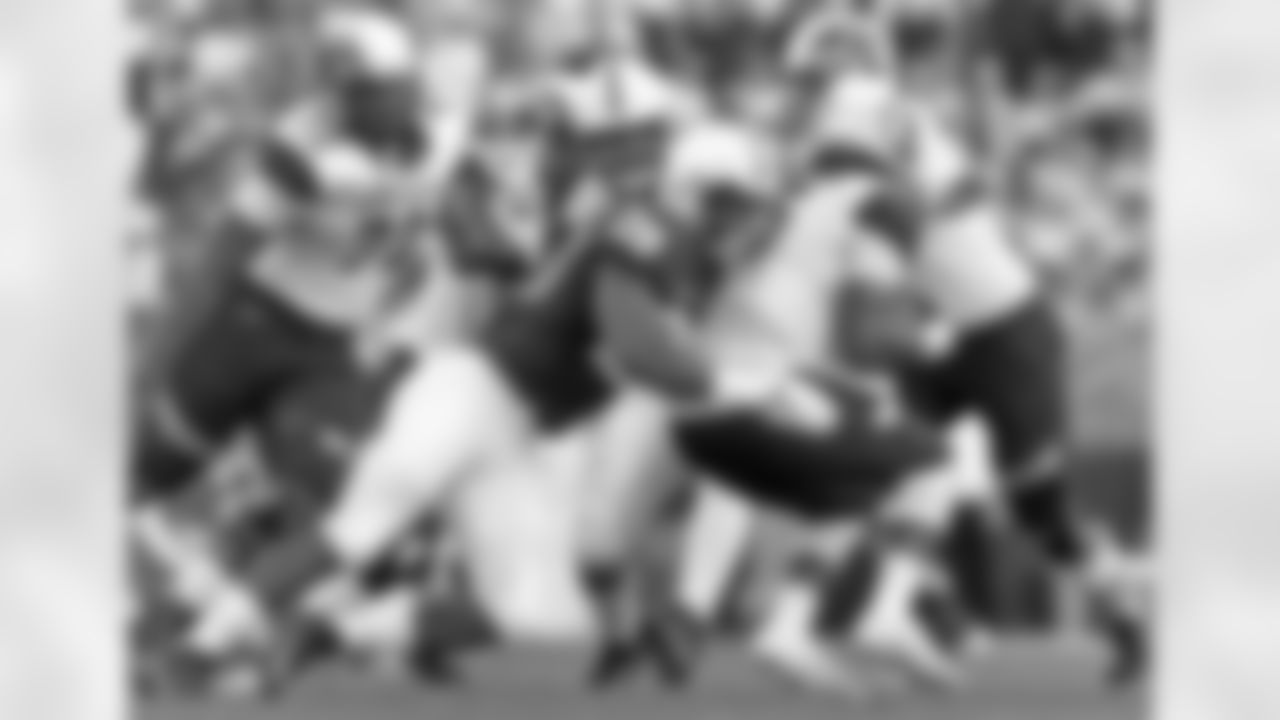
1) Jayson Oweh, Penn State
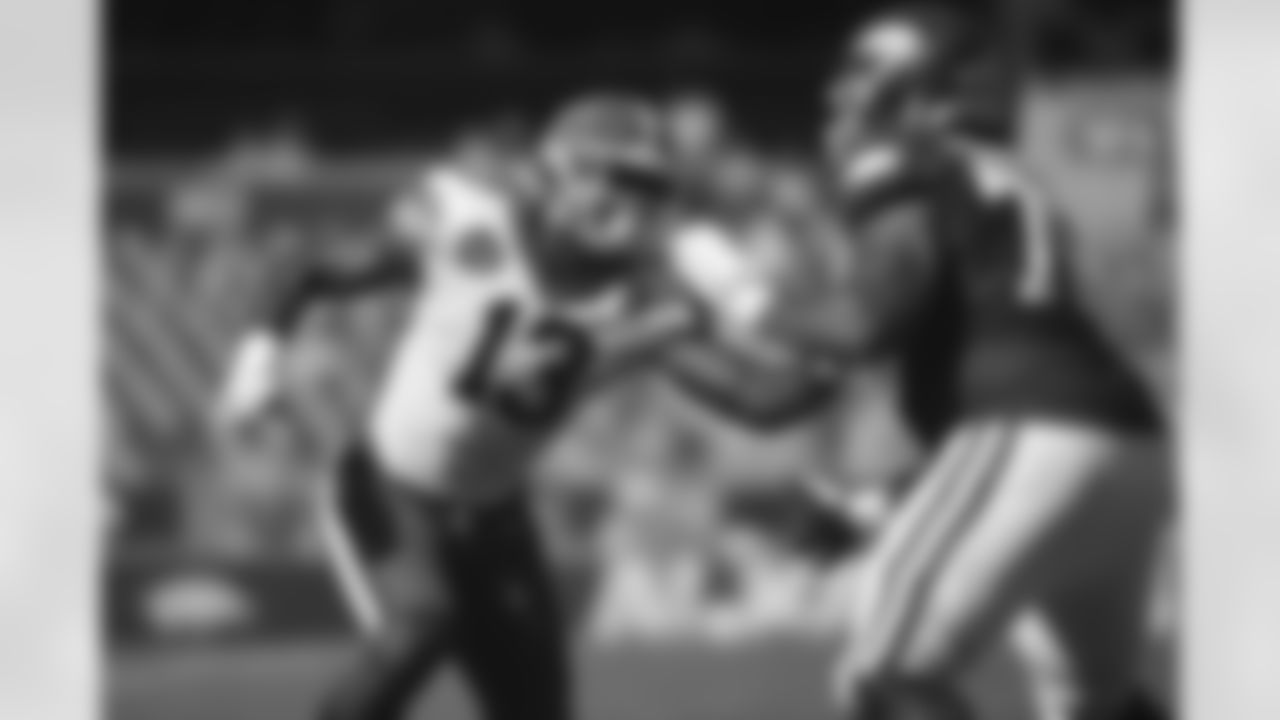
2) Azeez Ojulari, Georgia
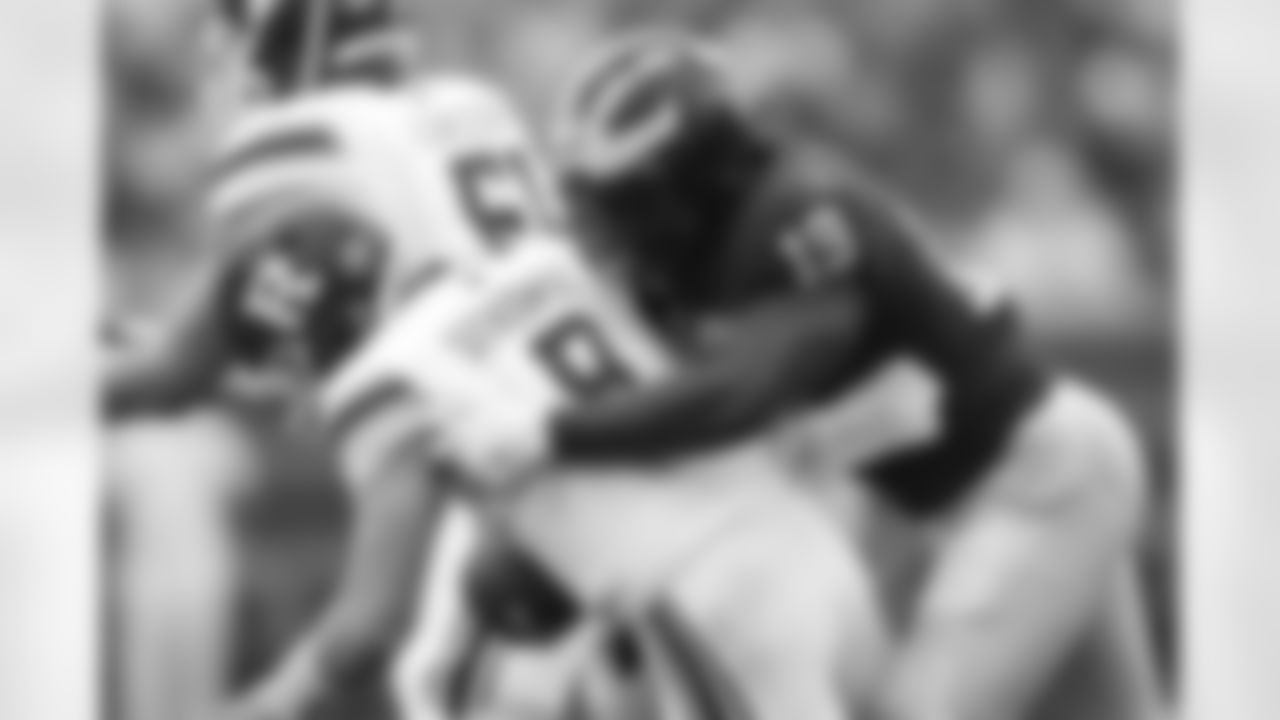
3) Kwity Paye, Michigan
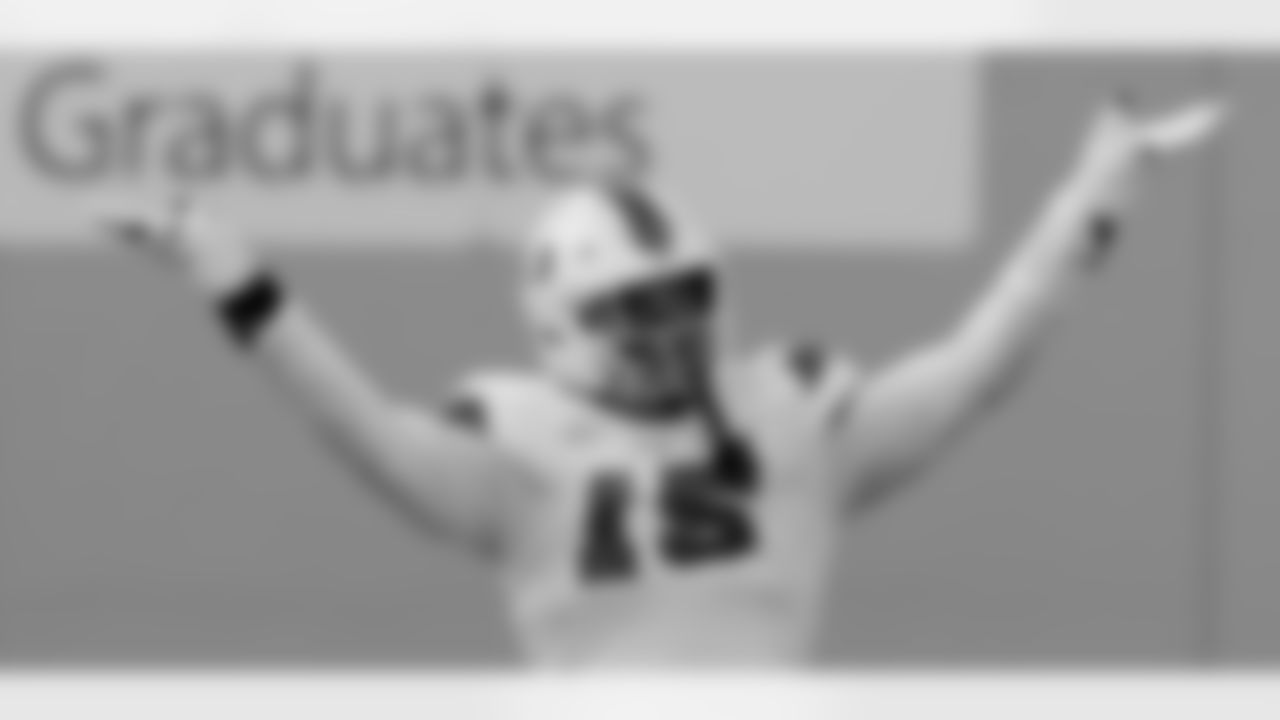
4) Jaelan Phillips, Miami

5) Greg Rousseau, Miami
NFL.com's Top 5 Defensive Tackles
1. Christian Barmore, Alabama
Overview (via NFL.com): Attack-oriented defensive tackle with a big body, violent hands and the talent to work his way around blocks and find the football. Barmore tends to be in the lead and take control of a majority of reps. His hands and feet sing in harmony and allow him to stay active and free from attempts to sustain blocks against him. His hands are heavy and powerful but also sudden and efficient, which creates early win opportunities for him in the run game and as a pass rusher. Barmore can be his own worst enemy when he freestyles his run fits and prematurely gives away positioning when posting up in read-and-react mode. He's exceptional at finding a blocker's edge and swiping past the outside hand to bring the ruckus inside the pocket. While he has similar size and skill set, it doesn't feel like he's as long at the point of attack as past Alabama defensive tackles now in the pros. Barmore's explosive first step, violent hands and upper-body power are the ingredients of a three-down defender with the versatility to play a number of positions in an even or odd front as an impactful rookie starter.
2. Levi Onwuzurike, Washington
Overview (via NFL.com): Considered by some scouts as a "flash" prospect with high-end moments on tape, but a lack of sustained excellence and production. Onwuzurike is undersized for his position but he's very strong for his size with the ability to anchor down against interior blockers. He's very physical and flashes moments where he is able to control and overwhelm single blocks. An explosive first step provides early momentum into the neutral zone, but he failed to post the high-end production that is usually associated with that interior trait. He's light on his feet but heavy with his hands, and that combination should lead to continued improvement as an NFL pass rusher. If he can play with the same grit we saw against Oregon and USC in 2019, Onwuzurike has a chance to become a disruptive starter in an attacking front.
3. Milton Williams, Louisiana Tech
Overview (via NFL.com): Pound for pound, Williams can match his toughness and strength with many of the interior defenders in this draft. Determining his best positional fit will be up to the team that drafts him, but he's a good football player who understands leverage and knows how to use his hands. He'll have some bumpy snaps from time to time due to a lack of length and overall mass, but it shouldn't be debilitating for his NFL career. Williams possesses twitchy power and short-area athleticism, but needs to continue the development of working the hands and feet as one to unlock his potential. His pass rush is relatively pedestrian at this time and will need to be upgraded to become more than just a good backup. Teams will weigh the tape and testing against subpar physical traits, but the end result could land him in the middle rounds as an upside talent.
4. Tyler Shelvin, LSU
Overview (via NFL.com): Block-eating nose tackle with girth, power and leverage to play the role of tree stump against the run in an odd or even front. Shelvin can engage double teams with some effectiveness to allow linebackers to run free, but he doesn't display much range to make plays. He can be inconsistent in controlling and shedding single blocks in a timely fashion. He would benefit from better conditioning to improve both his stamina and quickness. He's unlikely to ever be much of a playmaker or pass rusher, which could limit his draft value, but his stout presence in the middle should carry value for teams looking to tighten up against the run.
5. Alim McNeill, North Carolina State
Overview (via NFL.com): Sawed-off frame that lacks optimal length but carries plenty of base strength and upper-body explosiveness. McNeill lined up over the nose, which did him a bit of a disservice in relation to his athletic traits and overall strengths. He might not have the overall length and mass to withstand the rigors of two-gapping in the NFL, but he does have plus flexibility and fluidity for a big man and should create problems for centers as a shaded nose with the ability to attack or counter either A-gap. While he's a good athlete and should test well, he's not necessarily cat-quick and still relies more on power than first-step penetration quickness. He's a likely rotational nose early in his career and has a chance to develop into a starter.




